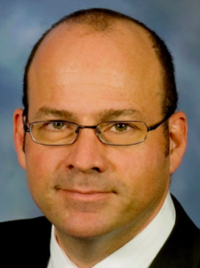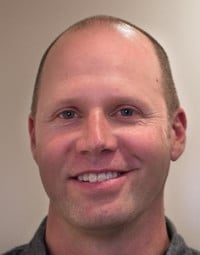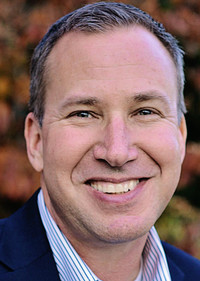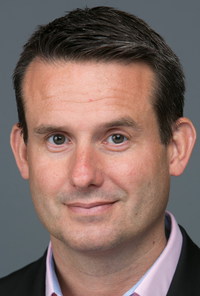In the New World of Healthcare Investing, Clinical Efficacy Is the Easy Part

Healthcare, despite its gee-whiz robotics in operating rooms and around-the-corner gene therapy and biotech-derived medicines, is surprisingly slow to integrate new technologies. This hallmark of the system has been reinforced by the changes already wrought by ObamaCare, and will survive any ongoing attempts to repeal or defund it.
Winning companies understand the reasons for healthcare’s slow integration of technology. This knowledge allows them to penetrate the system and make money. Losers become too smitten with their own life-saving contributions and ignore the broader structure of the healthcare industry. They usually go down quickly.
Traditionally, Healthcare has been a land of uncoordinated fiefdoms. This feudal structure is now quickly switching to a command and control system -- albeit with a lot of remaining embedded dominions that still wield decision power. This complexity presents new challenges to all classes of healthcare companies.
To appreciate the previous medieval system, look at the path to market of a new device -- say, a product to treat diabetic foot ulcers. Suppose the device had novel technology, and it went through the time and expense of proving its safety and efficacy. It won approval from the U.S. Food and Drug Administration.
Next it had to get into the hands of providers to use on patients. Most hospitals buy supplies and many devices through large purchasing companies. No purchasing contract, no hospital distribution. These companies must be lobbied and negotiated with. Next, individual hospitals decided whether to stock the new product. Each had its own decision algorithm and a committee to evaluate new technology. Each had its own varying criteria for efficacy, benefits and costs.
Then doctors chose whether to spend time and effort to learn how to use the new device, retrain their staffs and abandon the current (perhaps well-compensated) treatment. Most important, somebody had to foot the bill for the device's use and be convinced to pay up.
That’s a lot of steps to start healing some foot wounds.
This fragmented system is becoming blended with a top-down model. With ObamaCare, there is already rapid consolidation among providers of all types and a vastly increased role for government in coverage decisions. That means there are new Lords at the top of the feudal pyramid. They will decide if all of the other players in the system even get the option of embracing new technology. So in addition to winning over all the players of the old fragmented system, companies now also need to get those running the new, bigger provider organizations to buy in.
In some ways, ObamaCare has created the worst of all worlds. There is still the need to sell technology to a decentralized slew of rank-and-file players (if they do not want it, they will not use it). But now companies also need to get it past new Lords controlling access from the top.
These Lords will be the decision makers controlling the newly merged, often vertically integrated healthcare providers, as well as government bureaucrats. Most of the larger private healthcare providers are taking the form of Accountable Care Organizations, which have profound financial advantages embedded in ObamaCare. At the same time, bureaucrats at the top of Medicare have become almost prohibitively powerful as managed care organizations and vastly enlarged Medicaid based insurance exchanges accept government coverage decisions and reimbursement levels as their dictat.
Device, pharma and health services companies now face truly compound risk: technology risk, regulatory risk, distribution risk, integration risk, reimbursement risk, and now the Lord-approval risk.
Given this decentralized and illogical system for integrating new technology, how do companies penetrate healthcare and make money? In this setting, clinical usefulness is only a starting point to winning profits.
Companies must create an organized strategy for mitigating each level of risk. They need both to understand the system and to allot time and money to master it. Few companies do.
The future is often foretold in the initial business plan. Companies that spend too many pages on how great the technology is -- and too few on how to get it into a doctor's hands and get it paid for -- face a difficult future. Those that outline specific steps to master the multiple levels of risk are more likely to prosper.
I see a lot of startups looking for venture funding after demonstrating their products on five or six patients. Often the initial tests were done by a physician with a company affiliation (sometimes hidden, either artfully or clumsily). Not surprisingly, these trials invariably show phenomenal results. Viola, a medical miracle is born. Please give me $30 million so I can start production.
Many public companies, with products further down the pipeline, also rest on the flimsy laurels of clinical usefulness. They naively let the greatness of their products speak for itself. But without the right prompting, the system will always refuse to listen.
Successful companies create milestones, timelines and budgets to accomplish their goals within the context of a simultaneously disorganized and chauvinistic system at the bottom but with the added problem of pleasing the border guards at the top. They do this at the earliest stage of operation. They have management teams with experience in making these things happen. And they have plenty of cash to fund these expensive processes.
Strong players blend their efforts to accomplish several tasks at once. For example, during safety and efficacy trials to satisfy the FDA, they also track their costs and those of their competitors. They later use this data to demonstrate cost-effectiveness. These financial demonstrations are now essential both for the provider top of the line decision-makers as well as for the government bureaucrats.
Good companies develop initial financial forecasts around pricing structures that will allow hospitals and doctors to bill for their products on terms more favorable than the status quo, and account for the added financial risk being pushed onto providers. Pie in the sky revenue projections paper over these issues -- and are useless.
Winning companies understand who the decision makers are in hospital operating rooms and in government committee rooms. They hire publicists from the onset. The PR people target physicians early, to generate buzz so doctors want to try the products. They also place stories in the lay press to stoke patient demand before the products get evaluated by purchasing companies, hospital technology boards, finance committees of ACOs, and cost effectiveness commissions within the Centers for Medicare and Medicaid.
Healthcare is disorganized and illogical in embracing new technologies. ObamaCare has already created lasting change to intensify these qualities. Companies looking to master the market must be as organized and proactive as the system is irrational and lethargic. Clinical efficacy is just a small first step toward success.
Lloyd M. Krieger is a plastic surgeon, entrepreneur, and venture capital advisor. Krieger founded and directs Rodeo Drive Plastic Surgery, Inc. in Beverly Hills. The company targets consumers with a brand that represents quality, convenience, and affordability. Krieger has worked as an advisor to several start-up companies, venture capital firms and hedge funds. He lectures frequently about health finance and company valuation for medical and business groups. He also writes regularly on these matters for The New York Times, The Wall Street Journal, The Los Angeles Times, Barron’s, and The Washington Post. He completed his general surgery and plastic surgery residencies at UCLA. He has a BA from Stanford University and earned an MD and an MBA from the University of Chicago.

 Tony Greenberg
Tony Greenberg
 Ivan Nikkhoo, Managing Partner – Navigate Ventures
Ivan Nikkhoo, Managing Partner – Navigate Ventures Michael Sherman, Neil Elan and Karine Akopchikyan
Michael Sherman, Neil Elan and Karine Akopchikyan Alejandro Guerrero
Alejandro Guerrero Eric Eide, Alliance for SoCal Innovation
Eric Eide, Alliance for SoCal Innovation Kevin DeBre
Kevin DeBre Braven Greenelsh
Braven Greenelsh Rob Freelen, Los Angeles Market Manager, Silicon Valley Bank
Rob Freelen, Los Angeles Market Manager, Silicon Valley Bank Braven Greenelsh
Braven Greenelsh Kaäre Wagner, Silicon Valley Bank
Kaäre Wagner, Silicon Valley Bank Al Guerrero, Silicon Valley Bank
Al Guerrero, Silicon Valley Bank Rob Freelen, Los Angeles Market Manager, Silicon Valley Bank
Rob Freelen, Los Angeles Market Manager, Silicon Valley Bank Sid Mohasseb
Sid Mohasseb William Hsu
William Hsu Dinesh Ravishanker
Dinesh Ravishanker Dina Lozosfky
Dina Lozosfky Melinda Moore
Melinda Moore Jaspar Weir
Jaspar Weir Erik Caso
Erik Caso Tracy Olmstead Williams
Tracy Olmstead Williams Dave Berkus
Dave Berkus Bernard Luthi
Bernard Luthi Peter Cowen
Peter Cowen Nick Hedges
Nick Hedges Eric Larsen
Eric Larsen Michael Terpin
Michael Terpin Steve Reich
Steve Reich